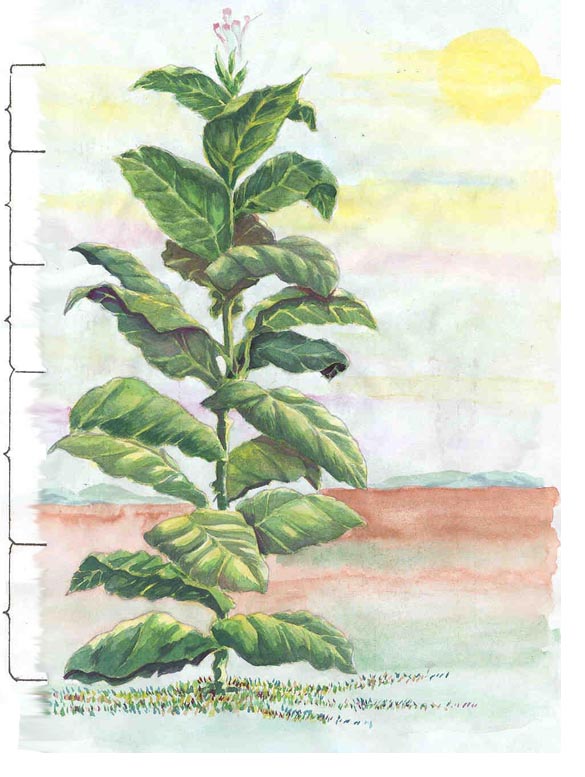Leaf Description
| TIPS |  |
| LEAF | |
| CUTTERS | |
| LUGS | |
| PRIMINGS |
Tips (T)
(not included in the International Grading System)
| Possible Grades: D, E, R |
Leaf (B)
| Possible Grades: A, B, C, D, E, R |
Cutters (C)
| Possible Grades: AA, A, B, C, D, E, R |
Lugs (X)
| Possible Grades: A, B, C, F1, F2, R |
Primings (P)
Group of leaves which ripen prematurely, as a result of starvation and display a lack of color due to deficiency. These leaves tend to fold underneath, concealing their undeveloped, small midribs and fibers. Leaves of this group show a material amount of ground injury, waste and soil particles, which is a characteristic of leaves grown nearest the soil surface. (12% of the total plant leaves)
| Possible Grades: F1, F2, R |
Standard Grades and Grade Descriptions
Philippine Flue-Cured Virginia Leaf Tobacco
| TOBACCO TYPES (CY 2009-2011) | |||||
|---|---|---|---|---|---|
| GRADE | VIRGINIA | GRADE | BURLEY | GRADE | NATIVE/DARK |
| AA | 66.00 | HIGH | 48.50 | ||
| A | 64.00 | A | 43.50 | M-1 | 39.00 |
| B | 62.00 | B | 41.50 | M-2 | 31.50 |
| C | 60.00 | C | 39.50 | L-1 | 24.00 |
| D | 55.00 | D | 35.00 | L-2 | 14.50 |
| E | 54.00 | E | 34.00 | ||
| F-1 | 50.00 | FF | 26.50 | ||
| F-2 | 47.00 | ||||
| R | 28.00 | R | 18.00 | ||
*Reject tobacco includes oxidized/chemically treated, barn scald, barn scorched and/or injury of more than 25%.




